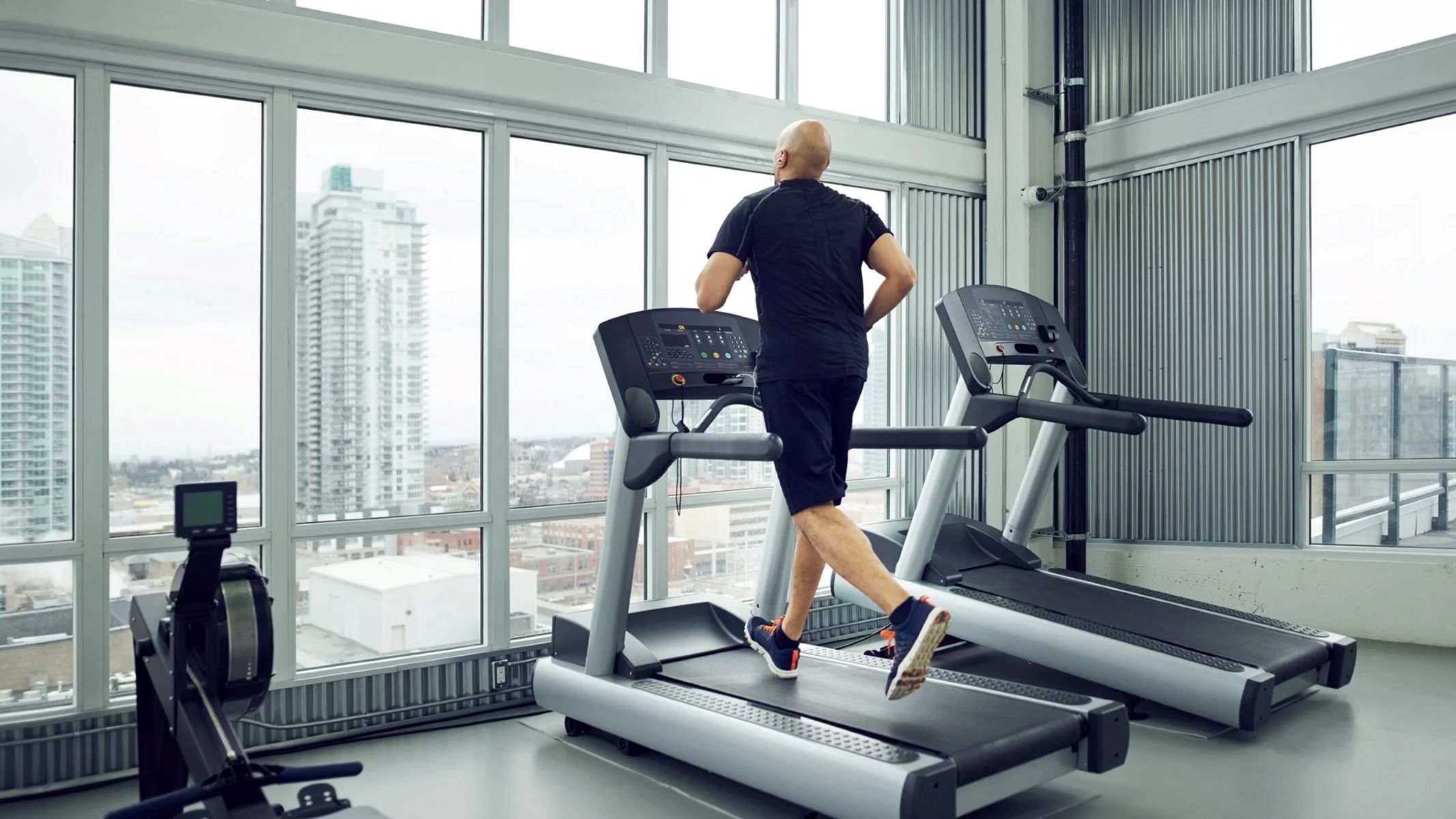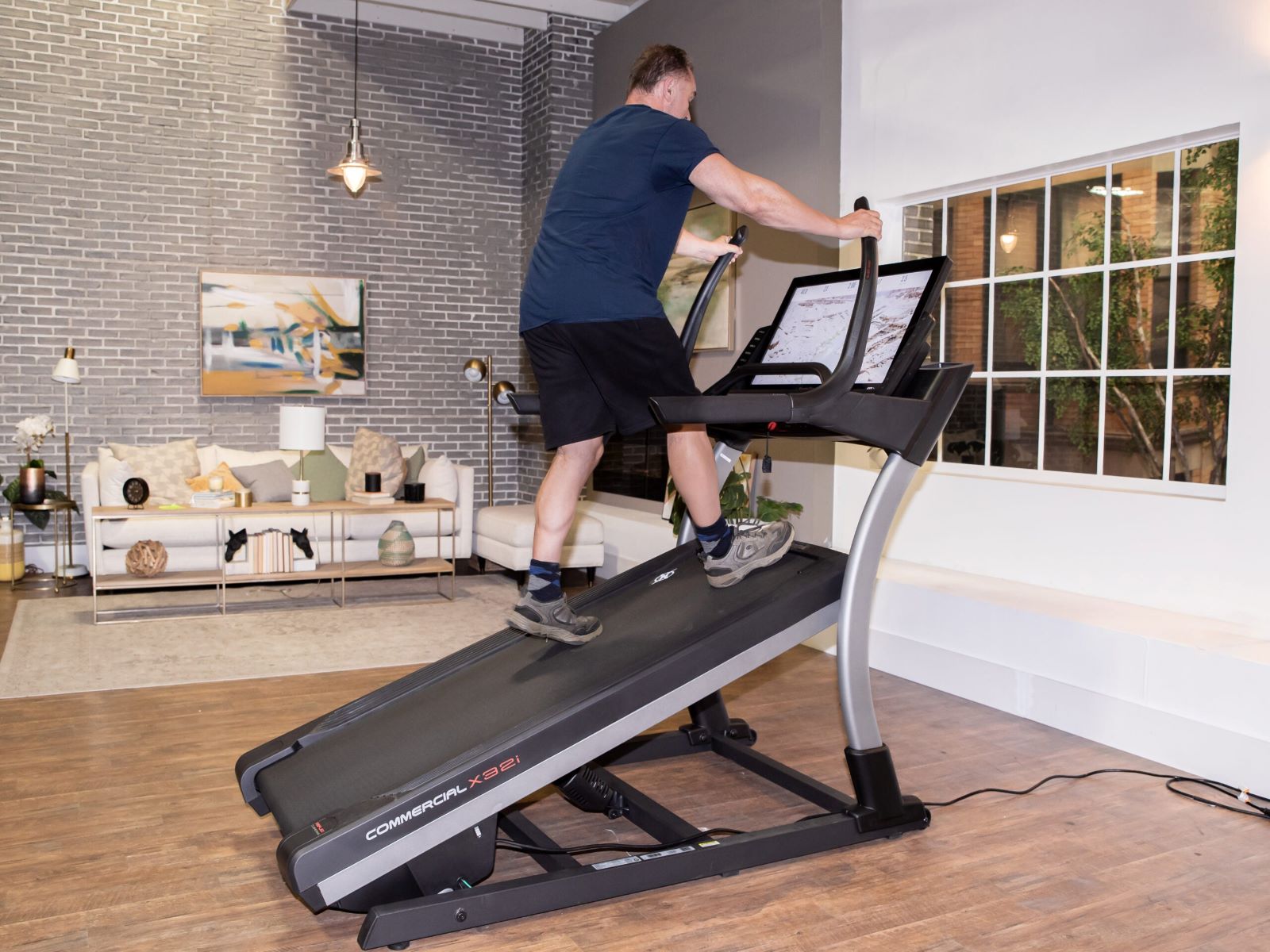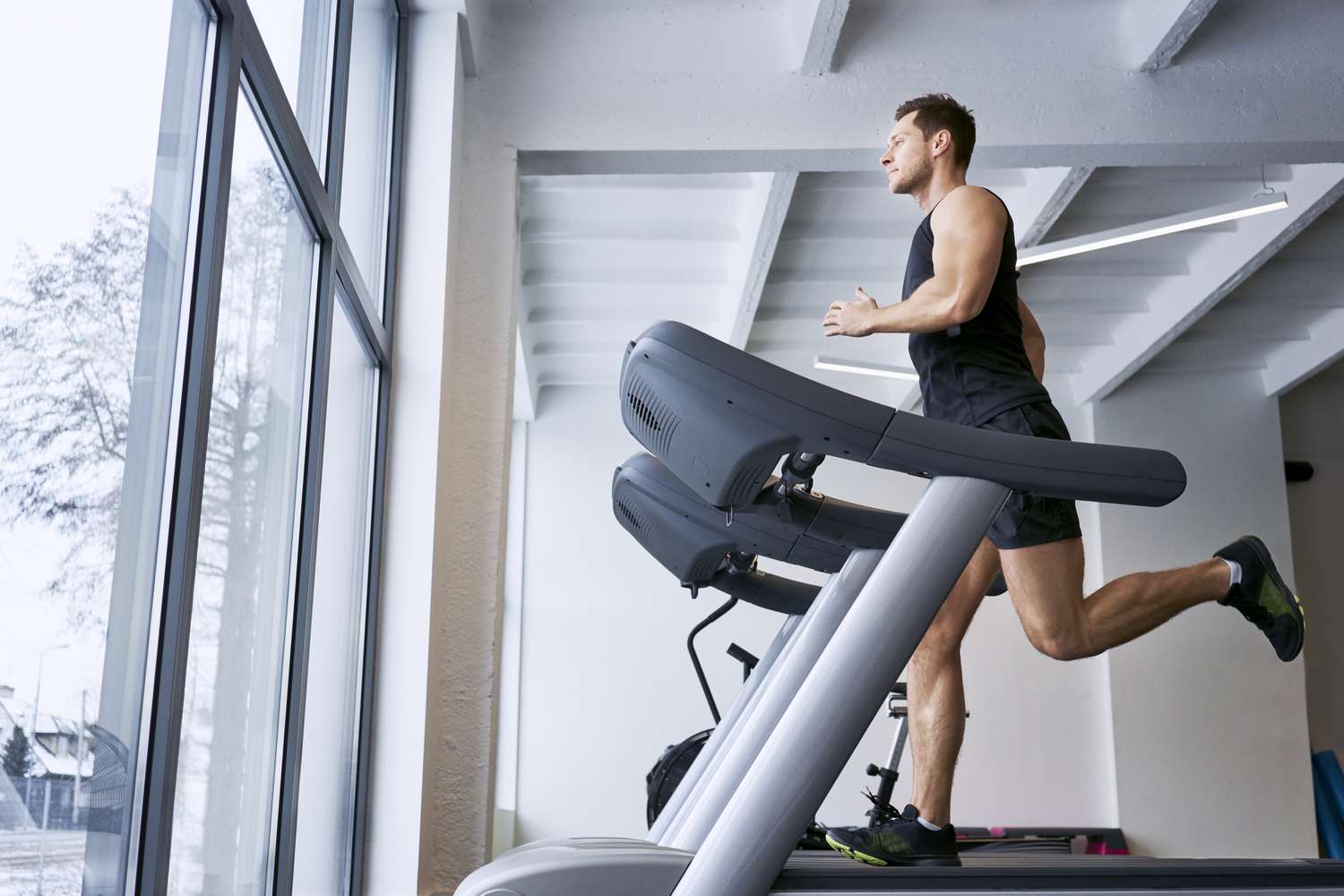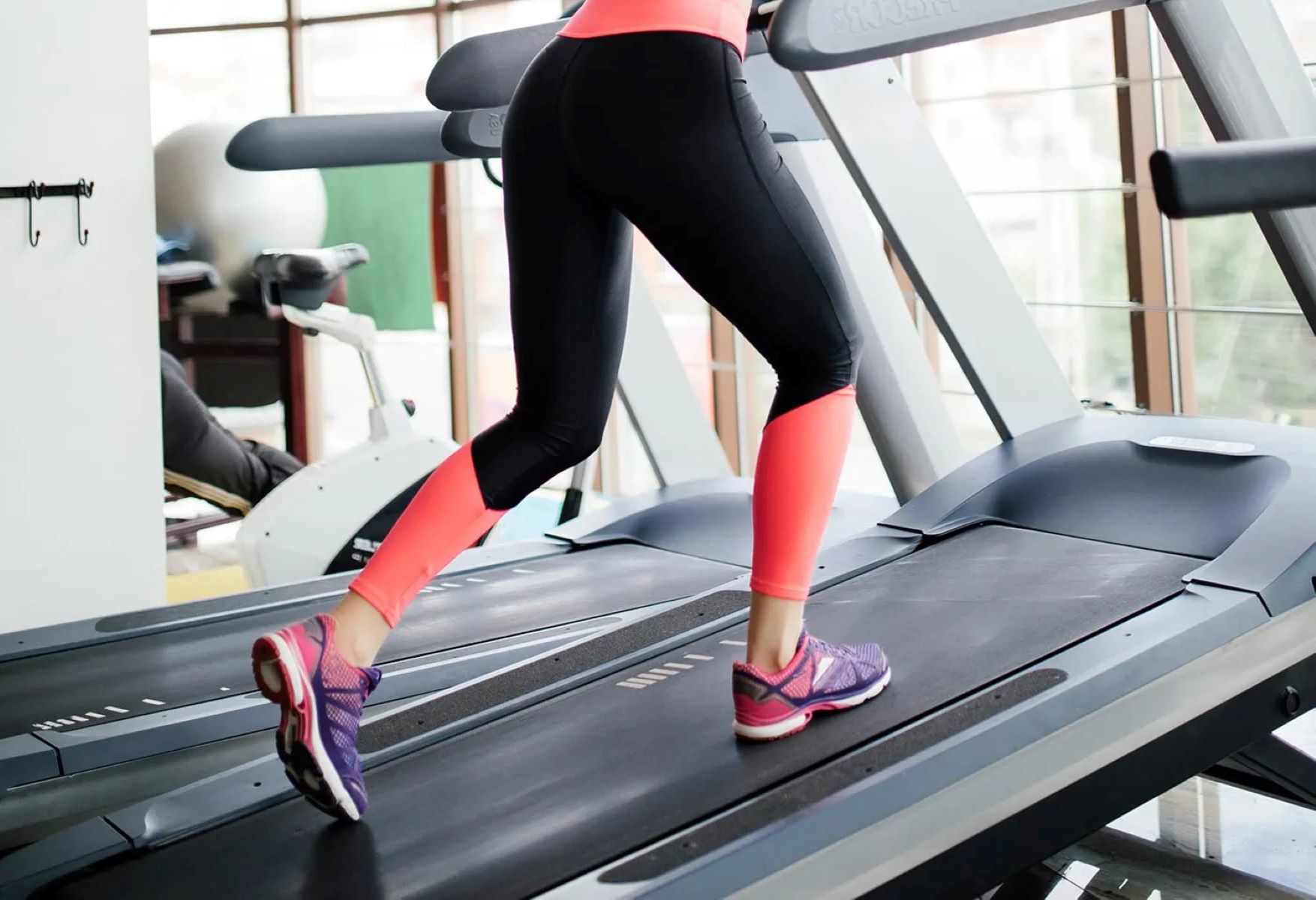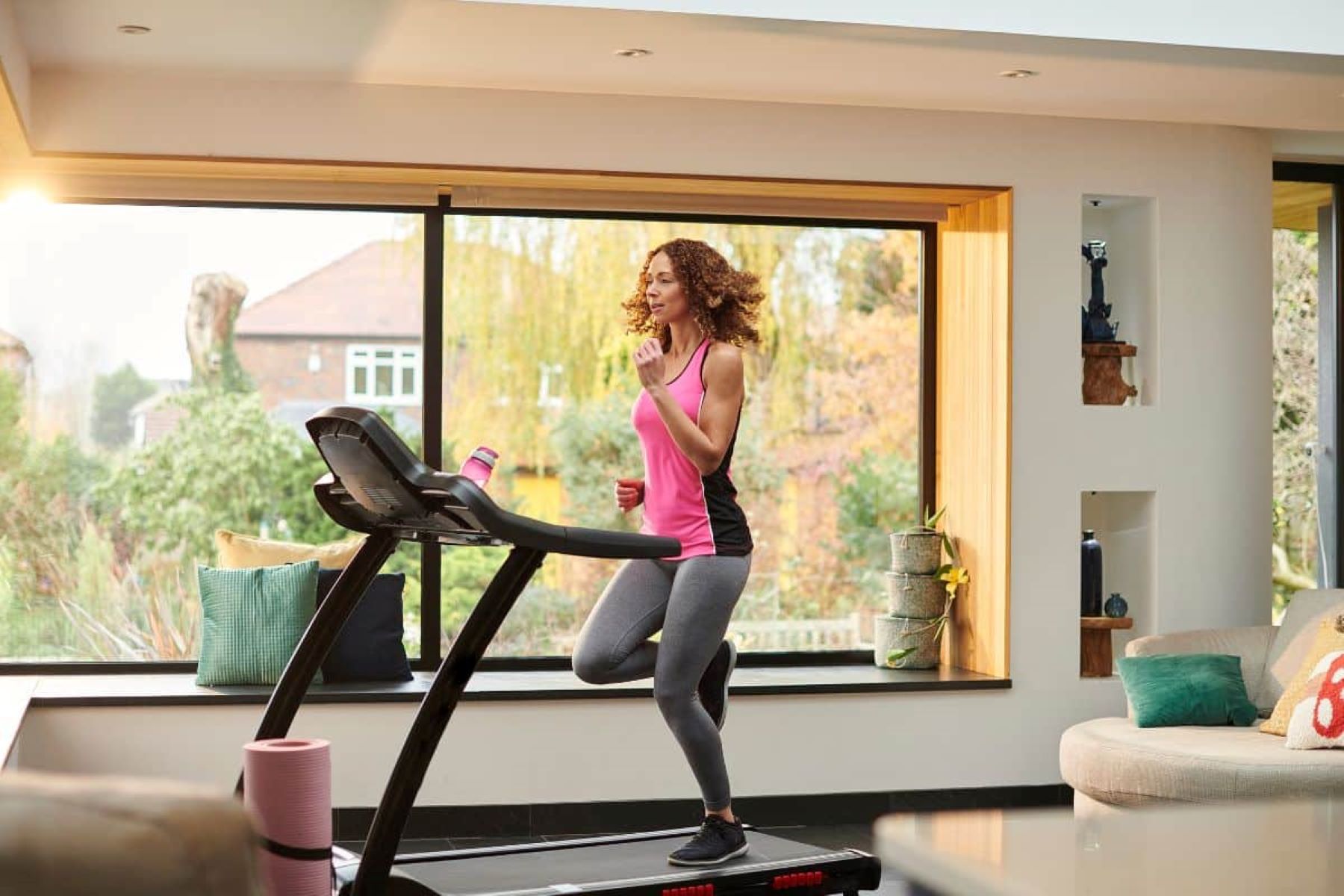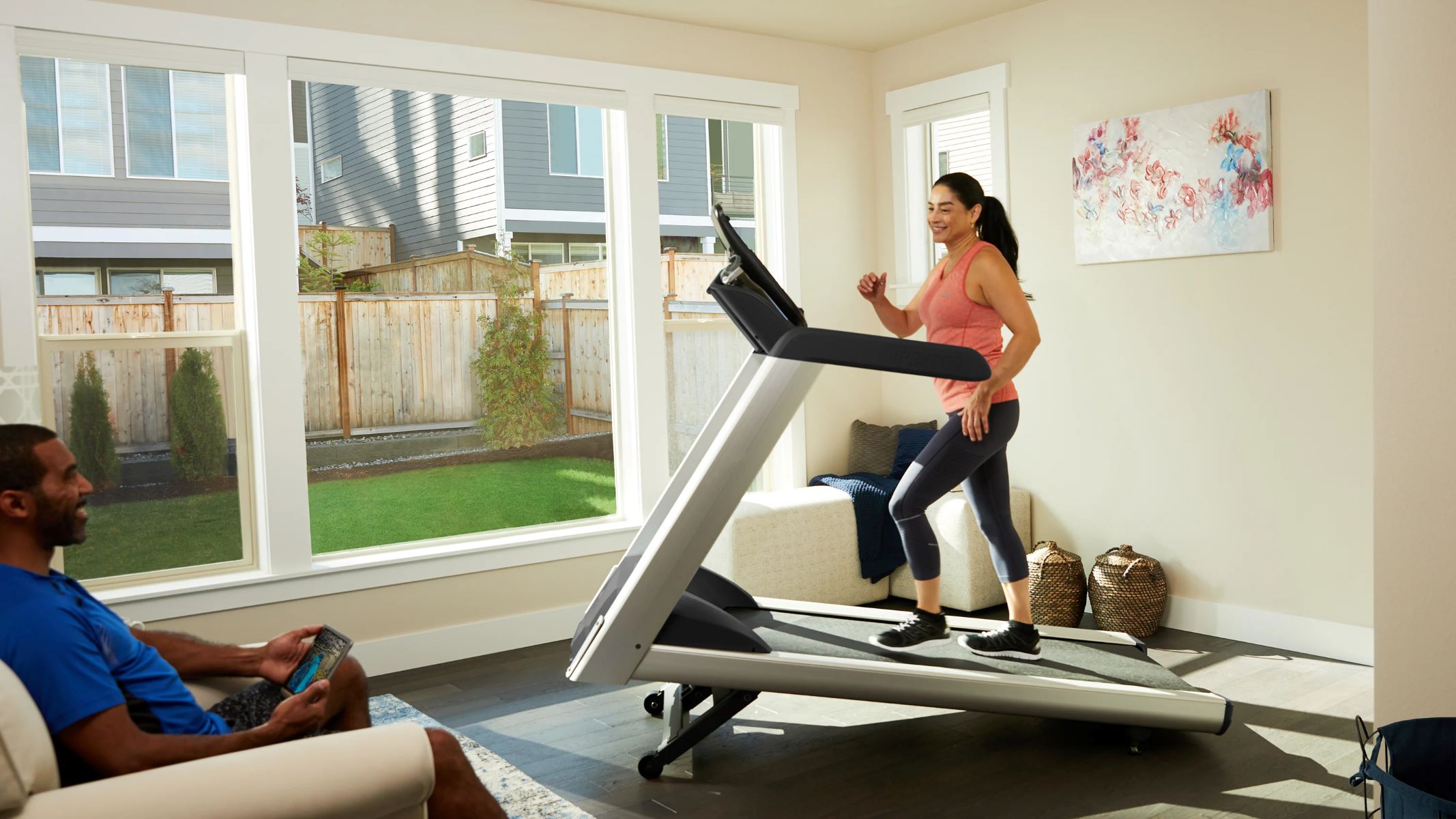

Featured
What Is A 15 Incline On A Treadmill
Modified: August 21, 2023
Discover the benefits of a 15% incline on a treadmill and how it can transform your workout routine. Explore this featured fitness feature now!
Introduction
When it comes to cardiovascular workouts, treadmills are a popular choice for both beginners and experienced fitness enthusiasts. They offer a convenient and effective way to burn calories, strengthen the heart, and improve overall fitness. One feature that can take your treadmill workout to the next level is the incline function.
The incline on a treadmill refers to the angle or slope at which the running surface is raised. Many treadmills offer a range of incline options, allowing you to simulate uphill running or walking. One common incline setting is 15%, which offers a challenging and beneficial workout experience.
In this article, we will explore what a 15% incline on a treadmill entails and the benefits it offers. Additionally, we will discuss the muscle groups that are targeted when using a 15% incline and provide some tips for safely incorporating this incline into your workouts.
So, whether you are a seasoned athlete looking to push your limits or a beginner wanting to add variety to your treadmill routine, read on to discover the advantages of using a 15% incline on a treadmill.
Definition of a 15% Incline on a Treadmill
A 15% incline on a treadmill refers to the elevation at which the running surface is set. This means that for every 100 units of horizontal distance you cover while running, you will ascend 15 units vertically. This creates a steep uphill slope that mimics the challenge of running or walking uphill on outdoor terrain.
Treadmills with incline settings typically range from 0% to 15% or higher, allowing users to adjust the incline to their desired level of difficulty. The 15% incline is considered a higher level of elevation, providing a more intense workout compared to lower incline settings.
It is important to note that the 15% incline is a relative measure. Different treadmills may have variations in their incline capabilities, and the actual angle of elevation may vary slightly between models. However, for the purposes of this article, we will refer to a 15% incline as the steep uphill slope commonly found on treadmills.
Using a 15% incline on a treadmill can significantly increase the intensity of your workout by engaging more muscles and requiring more effort. It simulates the feeling of running or walking uphill, which not only challenges your cardiovascular system but also targets specific muscle groups.
Now that we have a clear understanding of what a 15% incline on a treadmill means, let’s explore the benefits it offers and how it can take your fitness routine to new heights.
Benefits of Using a 15% Incline on a Treadmill
Using a 15% incline on a treadmill offers a multitude of benefits that can enhance your cardiovascular fitness, boost calorie burn, and strengthen specific muscle groups. Here are some of the key advantages:
- Increased Calorie Burn: Running or walking at a 15% incline requires more energy and effort compared to a level surface. This increased intensity leads to a higher calorie burn, helping you reach your weight loss or maintenance goals faster.
- Improved Cardiovascular Endurance: The steep incline stimulates your cardiovascular system, forcing your heart and lungs to work harder. This helps to improve your overall endurance and stamina, making daily activities feel easier and more effortless.
- Targeted Muscle Activation: Running or walking uphill on a 15% incline engages a different set of muscles compared to exercising on a flat surface. This incline primarily targets the muscles in your lower body, including your quadriceps, hamstrings, glutes, and calves. By incorporating a 15% incline into your treadmill routine, you can strengthen and tone these muscles effectively.
- Enhanced Lower Body Strength: As mentioned above, a 15% incline on a treadmill places a higher demand on your lower body muscles. This consistent uphill resistance helps to build strength and improve muscle tone in your legs and glutes, ultimately contributing to better overall balance, stability, and power.
- Variety and Mental Stimulation: Adding a 15% incline to your treadmill workout can break the monotony of exercising on a flat surface. It offers a new challenge that keeps your mind engaged and motivated, preventing boredom and making your workout more enjoyable.
These benefits highlight why incorporating a 15% incline on a treadmill can take your fitness routine to the next level. By challenging both your cardiovascular system and targeted muscle groups, you can achieve greater overall fitness and experience noticeable improvements in strength and endurance.
Muscle Groups Targeted with a 15% Treadmill Incline
Running or walking on a 15% incline on a treadmill engages a variety of muscle groups throughout your lower body. Here are the main muscle groups that are targeted:
- Quadriceps: The quadriceps, located at the front of your thighs, are heavily activated during uphill walking or running. They are responsible for extending your knee and providing power during the push-off phase of each stride.
- Hamstrings: The hamstring muscles, located at the back of your thighs, play a vital role in the deceleration phase when running or walking downhill. However, on an incline, they are engaged to a lesser extent but still play a supporting role in stabilizing the knee joint.
- Glutes: The muscles in your glutes, including the gluteus maximus, medius, and minimus, are recruited to a greater extent on a 15% incline. They assist in extending your hip while pushing off and propel your body forward.
- Calf Muscles: The calves, comprised of the gastrocnemius and soleus muscles, are actively involved in the push-off phase of each stride on an incline. They help to lift your body upwards and are crucial in maintaining balance and stability.
- Hip Flexors: The hip flexor muscles, including the iliopsoas, are engaged to a greater extent on an incline. These muscles assist in lifting your knees and propelling your legs forward with each stride.
Incorporating a 15% incline on a treadmill effectively targets these key muscle groups, helping to strengthen and tone your lower body. Regularly engaging these muscles can lead to improved muscle definition, increased power, and enhanced overall lower body strength.
It is important to note that while a 15% incline primarily targets the lower body, it also helps to engage and strengthen the core muscles to a certain extent. The core muscles work to stabilize your body during the uphill challenge, contributing to better posture and balance.
By understanding the specific muscle groups targeted with a 15% treadmill incline, you can design your workouts to focus on these areas and achieve your fitness goals more effectively.
Tips for Incorporating a 15% Treadmill Incline into Your Workout
Incorporating a 15% incline on a treadmill can add a new challenge and elevate your workout routine. Here are some useful tips to help you make the most of this incline setting:
- Start Gradually: If you are new to incline training, start with a lower incline setting and gradually work your way up to 15%. This helps your muscles and cardiovascular system adapt to the increased intensity over time.
- Warm-Up Properly: Before you begin your workout on a 15% incline, make sure to warm up by walking or jogging on a flat surface for 5-10 minutes. This prepares your body for the higher intensity and minimizes the risk of injury.
- Mix It Up: Incorporating interval training can be a great way to maximize the benefits of a 15% incline. Alternate between periods of walking or jogging on the incline and periods of recovery on a flat surface to challenge your cardiovascular system and muscle groups even further.
- Use Proper Form: Maintain good posture throughout your workout. Keep your head up, shoulders back, and engage your core muscles. Avoid leaning forward or holding onto the handrails excessively, as this can reduce the effectiveness of the incline workout.
- Focus on Balance: Running or walking on a steep incline requires improved balance and stability. Pay attention to your foot placement and make sure to distribute your weight evenly. Engaging your core and using your arms for balance can also help improve stability.
- Track Your Progress: Keep a record of your workouts on the 15% incline. Note the distance covered, time taken, and how you felt during the session. This can help you track your progress over time and set achievable goals for future workouts.
- Stay Hydrated: Incline training can be more physically demanding, so remember to drink water before, during, and after your workouts to stay hydrated.
- Mix Incline with Other Exercises: Consider incorporating other exercises such as strength training or high-intensity interval training (HIIT) on the flat surface of the treadmill to create a well-rounded workout routine.
By following these tips, you can safely and effectively incorporate a 15% incline into your treadmill workouts, maximizing the benefits and achieving your fitness goals.
Safety Considerations when Using a 15% Treadmill Incline
While working out on a 15% incline on a treadmill can be highly effective, it is important to prioritize safety to prevent injuries and ensure a smooth workout experience. Here are some safety considerations to keep in mind:
- Consult with a Healthcare Professional: If you have any pre-existing medical conditions or concerns, it is advisable to consult with a healthcare professional before incorporating a 15% incline into your workout routine. They can provide personalized guidance and ensure that it is safe for you to engage in incline training.
- Start Slow and Progress Gradually: As mentioned earlier, it is crucial to start with a lower incline and gradually increase the elevation over time. This allows your muscles and cardiovascular system to adjust and reduces the risk of muscle strains or overexertion.
- Use the Handrails Sparingly: While handrails can provide support and stability, relying on them too much can alter your posture and reduce the effectiveness of the workout. Only use the handrails when necessary for balance or safety, such as during high-intensity intervals or when fatigued.
- Stay Hydrated: Incline training can be more physically demanding and cause increased sweating. Remember to drink water before, during, and after your workouts to stay properly hydrated.
- Use Proper Footwear: Wear supportive and comfortable shoes while working out on a 15% incline. This helps to prevent foot and ankle injuries and provides better traction on the treadmill surface.
- Listen to Your Body: Pay attention to any signs of discomfort or pain during your workout. If you experience sharp or persistent pain, dizziness, or shortness of breath, stop exercising immediately and seek medical attention if necessary.
- Follow Treadmill Safety Guidelines: Familiarize yourself with the safety features and guidelines of your treadmill. Ensure that the emergency stop button is easily accessible and understand how to safely operate the incline function. Regularly maintain and inspect your treadmill for proper functioning.
- Allow for Adequate Recovery: Incline training can be more physically demanding, so make sure to allow your body enough time to recover between workouts. Rest and recovery are essential for preventing overuse injuries and improving overall performance.
By taking these safety considerations into account, you can enjoy the benefits of a 15% treadmill incline while minimizing the risk of injury or discomfort. Listen to your body, use proper form, and prioritize safety at all times.
Conclusion
Incorporating a 15% incline on a treadmill can revolutionize your workout routine by offering a challenging and effective way to improve cardiovascular fitness, burn calories, and strengthen specific muscle groups. By understanding the definition of a 15% incline and the benefits it offers, you can take your fitness goals to new heights.
The 15% incline on a treadmill targets various muscle groups in the lower body, including the quadriceps, hamstrings, glutes, calves, and hip flexors. Regularly engaging these muscles through incline training can lead to improved muscle strength, definition, and overall lower body stability.
When using a 15% incline, it is important to consider safety precautions. Starting gradually, using proper form, staying hydrated, and listening to your body are essential for a safe and effective workout. Consulting with a healthcare professional and following treadmill safety guidelines further enhance the overall safety of your incline training.
So, whether you are an experienced athlete looking to challenge yourself or a beginner seeking to add variety to your treadmill routine, don’t hesitate to incorporate a 15% incline into your workouts. Embrace the benefits, target specific muscle groups, and watch your fitness levels improve as you conquer the uphill challenge.
Take the leap and elevate your fitness journey with a 15% incline on a treadmill. Your body will thank you as you reach new heights of strength, endurance, and overall fitness!

